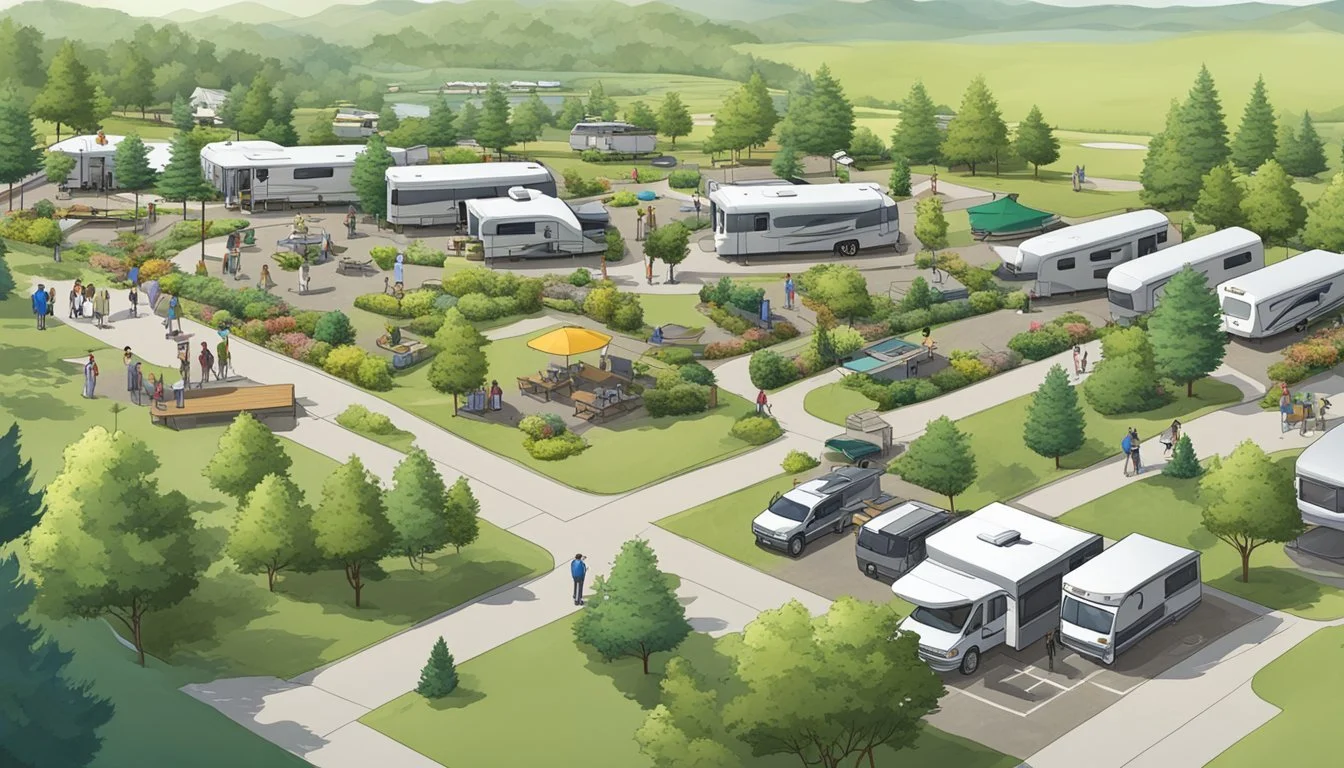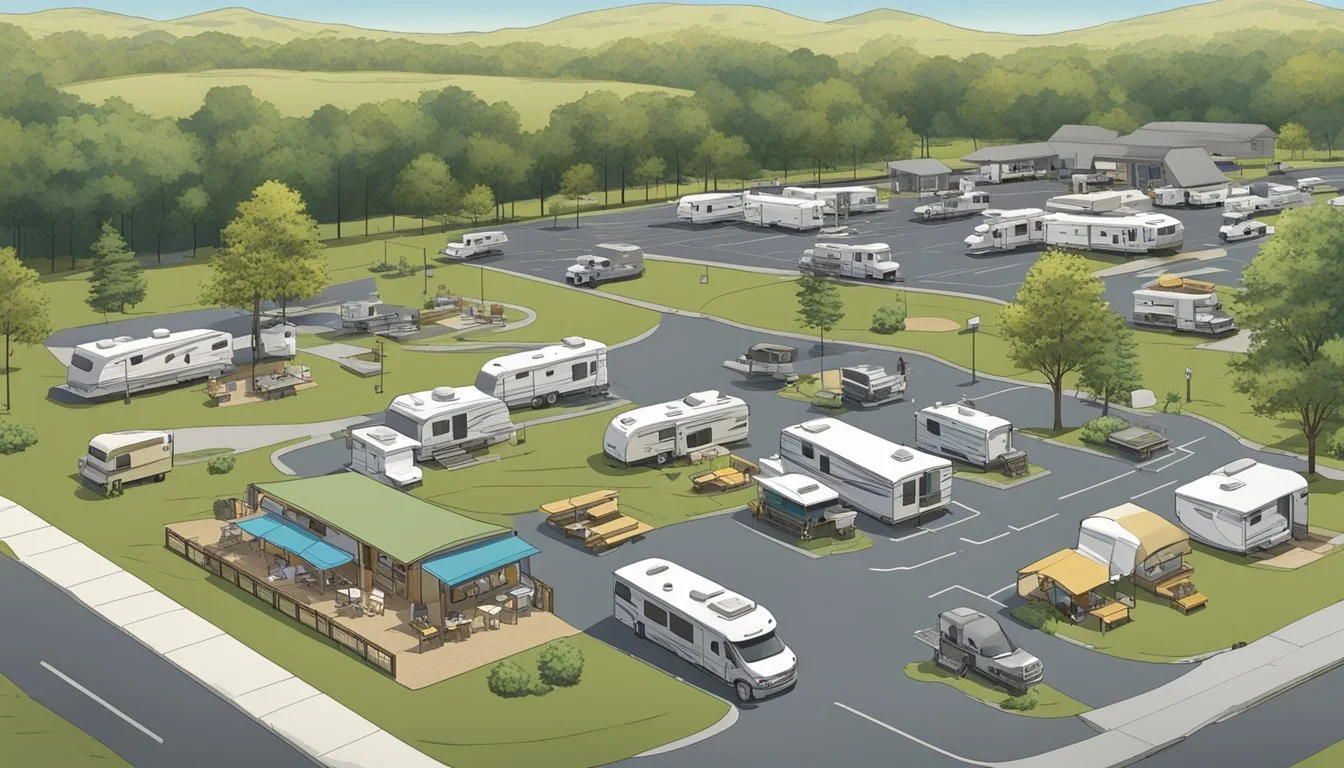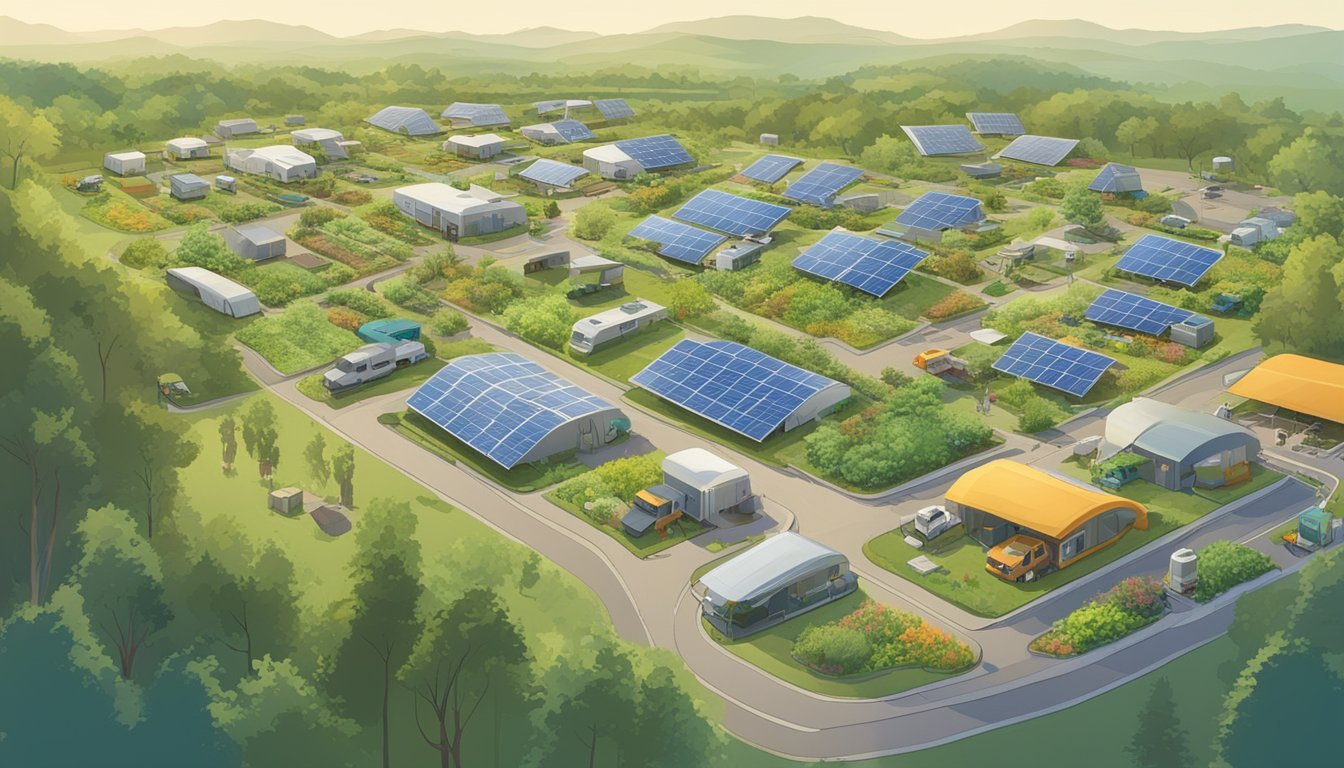Free Land for RV Parks
Creating Essential Travel Stops
Finding free land for RV parks to create travel stops is a game-changer for avid RVers and budget-conscious travelers. Whether you're looking for boondocking sites on public lands or campgrounds operated by agencies like the U.S. Army Corps of Engineers, there are numerous opportunities to park your RV without breaking the bank. Resources like "Camping with the Corps of Engineers" or the Ultimate Public Campground Project guide offer invaluable insights into these economical camping options.
Another excellent tool for RV enthusiasts is the RV Trip Wizard, which helps you plan your journey, find suitable campgrounds, and manage costs along the way. For those interested in unique and private camping spots, platforms like HipCamp and Campendium provide detailed campground information and reviews. With the right resources and planning tools, finding free and affordable RV parking can be both straightforward and rewarding.
Many public lands managed by state parks, recreation, and wildlife divisions also offer free or low-cost RV camping options. For example, in Colorado, agencies such as the Colorado State Parks and Colorado Fish and Wildlife Service provide RV-friendly locations. These public spaces not only enhance the travel experience but also contribute to significant savings, making your adventures more accessible and enjoyable.
The Concept of Free Land for RV Parks
The idea of offering free land for RV parks is rooted in historical practices and is driven by the current demand for affordable and accessible camping options. Establishing these parks can benefit both RVers and local communities by providing low-cost travel alternatives and boosting local economies.
Historical Context
Historically, the concept of offering free or low-cost land for camping has been tied to public land use policies in the United States. In the mid-20th century, national and state parks began allocating areas for RV and tent camping. This practice expanded as RV travel gained popularity.
Public lands managed by agencies like the Bureau of Land Management (BLM) and the U.S. Forest Service often include designated areas where RVers can camp for free. This is commonly referred to as "boondocking" or "wild camping." These areas typically provide minimal services, encouraging self-sufficiency among campers.
Current Trends and Demand
In recent years, the rising costs of private campgrounds and the growing popularity of RV travel have amplified the demand for free or low-cost camping options. The RV industry has seen significant growth, with many opting for RV living as a full-time lifestyle.
Websites and apps now help RVers locate free camping spots on public lands. This digital shift has made it easier for travelers to plan their stays and find available resources. The increase in RV sales and the shift towards more remote and self-sufficient travel styles during and after the pandemic further highlight this trend.
Benefits of Establishing RV Parks
Creating RV parks on free land can provide numerous benefits. For RVers, these parks offer affordable travel options, making it easier to explore and enjoy the outdoors without significant financial strain. The availability of free camping spots allows for more flexibility and spontaneity in travel plans.
Local communities can also gain from these initiatives. By attracting RVers, towns near free camping sites can experience boosts in local commerce as travelers spend money on supplies, dining, and other services. Additionally, increased tourism can create job opportunities and support local businesses.
Ultimately, the establishment of RV parks on free land aligns with the needs of modern RVers, promoting both economical travel and community development.
Legal Framework and Acquisition
Establishing an RV park on free land involves understanding legal parameters and acquiring proper permits. Key entities such as the Bureau of Land Management (BLM), Forest Service, and state and federal agencies play crucial roles in this process.
Understanding Public Lands
Public lands provide a significant opportunity for RV park development. These lands, including those managed by the BLM, National Parks, and Forest Service, often come with specific regulations and usage rights. It's essential to distinguish between different categories of public lands, as each has unique requirements.
National Parks: Tend to have stricter regulations to preserve natural resources.
State Parks: Regulations can vary widely, often providing more flexibility than federal parks.
Forest Service Land: Usually offers more lenient development options but requires adherence to environmental guidelines.
Grasping these distinctions ensures compliance and helps in drafting appropriate development plans.
Bureau of Land Management (BLM) Policies
The BLM manages vast swathes of public land, making it a prime candidate for RV park development. Their policies focus on sustainable use, which means balancing recreation with conservation.
Land Use Permits: Required for any commercial development, including RV parks.
Environmental Impact Assessments: Often needed to evaluate the potential effects of development on local ecosystems.
Recreational Use: Regulations specific to recreational activities must be followed to avoid fines and operational disruptions.
BLM lands typically require understanding multiple layers of regulatory compliance, ensuring the proposed projects align with conservation goals.
Navigating State and Federal Regulations
Navigating regulations at both state and federal levels is crucial for successful RV park development. Federal laws impose baseline standards, while state-specific regulations can add further requirements.
Key factors to consider:
Zoning Laws: Area-specific rules dictating land use, density, and permitted activities.
Permits and Licensing: Necessary for legality and often involve multiple agencies.
Health and Safety Codes: Covering sanitation, fire safety, and visitor welfare.
Different regions will have varied regulations, making local expertise invaluable. Detailed attention to these regulations ensures that the RV park remains compliant and operational.
Location Planning and Analysis
Selecting the optimal location for an RV park involves evaluating local regulations, nearby attractions, and environmental factors to create a travel destination that appeals to RV enthusiasts.
Identifying Suitable Locations
To identify suitable locations, one must first ensure compliance with local, state, and federal regulations. Consult local planning departments to understand zoning laws and land use permits. Prioritize regions offering accessibility to major highways and sufficient land for development.
Factors like land cost, availability of utilities, and proximity to urban centers should be considered. Utilize GPS technology to assess terrain and plot potential layouts. Optimal RV parks balance accessibility with a location's natural beauty.
Proximity to Scenic Locations and Amenities
An RV park’s success often hinges on its proximity to scenic locations and key amenities. Proximity to national parks, beaches, lakes, or mountains can greatly enhance the appeal.
Nearby amenities such as restaurants, grocery stores, and medical facilities add convenience. Offering guests attractions like hiking trails or wildlife viewing spots can enhance their experience. Ensure that the park’s location aligns with the interests of the target demographic.
Environmental Impact Considerations
Carefully assessing the environmental impact is crucial in RV park location planning. Conduct thorough environmental impact studies to understand how the development might affect local wildlife and ecosystems.
Implement sustainable practices such as water conservation and waste management to minimize the footprint. Choose locations that can support the infrastructure without causing significant disruption to the natural habitat. Being mindful of environmental impacts not only preserves nature but can also attract environmentally conscious travelers.
The Role of Technology in RV Parks Development
Technology has become a significant factor in enhancing the operations and guest experiences at RV parks. From AI management systems to advanced booking solutions, tech innovations streamline processes and introduce new conveniences for travelers.
Utilizing AI and Apps in Management
Artificial Intelligence (AI) and mobile apps play key roles in managing RV parks. AI can automate reservations, optimize resource allocation, and predict maintenance needs, reducing the administrative burden.
For instance, apps can provide real-time updates on space availability and facilities, allowing park managers to efficiently handle peak seasons. An AI-powered chatbot can also offer 24/7 customer service, addressing common queries and troubleshooting problems quickly.
Websites integrated with AI further enhance user interaction by personalizing recommendations based on user data, ensuring that guests receive suggestions tailored to their preferences.
Innovative Booking Solutions
Modern booking solutions are reshaping how RV parks operate, offering convenience and efficiency. Online booking platforms with integrated payment gateways simplify the reservation process. Campers can choose their spots, schedule visits, and even pre-pay for services, reducing check-in times.
Websites with reservation systems, complemented by user-friendly apps, ensure that guests have a seamless experience from booking to arrival. Advanced systems also support dynamic pricing, helping park operators adjust rates based on demand and availability.
Additionally, automated booking confirmation and reminders via email or SMS keep guests informed and reduce no-shows.
Mapping and GPS Integration
GPS technology and mapping services like Google Maps are invaluable for RV travelers and park operators alike. Accurate GPS mapping allows guests to navigate easily to and within the park, while digital maps highlight amenities and drive routes.
Integration with mapping services enables parks to provide detailed directions and travel tips. This technology also allows operators to create digital maps of the park layout, helping guests find parking spots, facilities, and scenic trails with ease.
For enhanced navigation, RV parks can install GPS tracking systems within their properties. This ensures better management of space and improves the overall guest experience by reducing confusion and helping guests find their way more efficiently.
Infrastructure and Services
A successful RV park requires thoughtful planning in amenities, parking lot management, and providing essential services to ensure a pleasant stay for travelers. These aspects play a crucial role in differentiating a well-maintained park from less developed options.
Developing Essential Amenities
A well-designed RV park needs to offer essential amenities to enhance comfort and convenience. Reliable electrical hookups are crucial, ensuring that various types of RVs can connect safely. Clean and accessible water supplies and sewer systems are also key.
Recreational areas, such as picnic spots and play areas, improve guest satisfaction. By providing these basic amenities, RV parks cater to both short-term and long-term visitors. Additionally, having clear signage and information boards helps guests navigate the park effortlessly.
Parking Lot Management
Efficient parking lot management is critical in maintaining order and maximizing space. Clear, defined parking spaces with proper dimensions accommodate different RV sizes, from small travel trailers to large fifth wheels.
Directional signage helps manage traffic flow, reducing congestion and enhancing safety. Space reservation systems can prevent overbooking and ensure that all guests have a designated spot. Whether catering to those who enjoy boondocking or structured sites, organization is key.
Hookups and Accessibility Services
Hookups should be reliable and accessible for all guests. Providing full hookups—electric, water, and sewer—ensures that guests can easily connect their vehicles. For those engaging in dry camping or dispersed camping, clearly marked areas with minimal infrastructure can be offered.
Consideration for accessibility services, such as wide paths for ease in parking and maneuvering, is essential. Ensuring all areas are ADA compliant will cater to guests with disabilities, enhancing inclusivity. In developed campgrounds, having easy-to-reach hookups and level ground is vital.
In summary, a well-functioning RV park must offer essential amenities, maintain efficient parking lot management, and provide reliable hookups and accessibility services to meet the diverse needs of travelers. These components contribute to the park's overall appeal and functionality.
Economic and Business Considerations
Managing costs, building partnerships with local businesses, and implementing effective marketing strategies with a focus on customer reviews are vital for the success of an RV park business.
Cost Management and Budgeting
Starting an RV park involves significant initial investments. Land purchase or lease is the first major cost, followed by infrastructure expenses like roads, utilities, and amenities.
Budgeting should account for operational costs such as maintenance, utilities, and employee wages. Effective cost management can involve periodic audits and employing cost-saving technologies like solar energy.
Capital expenditures might also include insurance and licensing fees. Overall, planning and meticulous budgeting are essential to maintaining financial health and achieving profitability in the long term.
Partnerships with Local Businesses
Forming strategic partnerships with local businesses can enhance the customer experience and stimulate local economies. Collaborate with nearby grocery stores, restaurants, and tourist attractions to offer discounts or package deals for RV park guests.
These collaborations not only enrich the visitor experience but also provide additional revenue streams through affiliate programs. Local businesses could feature the RV park in their promotional materials, creating a mutually beneficial relationship that boosts visibility and customer loyalty.
Marketing and Customer Reviews
Effective marketing is crucial for attracting new visitors to your RV park. Utilize digital marketing strategies such as social media, search engine optimization (SEO), and email campaigns to reach a broader audience.
Customer reviews play a significant role in the park's reputation. Encourage satisfied guests to leave positive reviews on platforms like Google, TripAdvisor, and dedicated RV travel forums.
Responding to feedback, both positive and negative, helps build trust and shows a commitment to improving guest experiences. Incorporating guest feedback into service improvements can lead to higher satisfaction rates and repeat visits.
Community and Sustainability
Establishing RV parks on free land can significantly benefit both the environment and local communities. This section explores how RV parks can integrate with localities, promote sustainable practices, and ensure long-term growth.
Integrating with Local Communities
RV parks can create strong ties with nearby towns and cities. By partnering with local businesses, they can provide visitors with access to services such as restaurants, shops, and attractions.
Local hiring can enhance the park's sense of community. Employing locals not only provides jobs but also ensures that the park maintains a welcoming atmosphere.
Hosting community events or partnering with local festivals can further strengthen these ties. These activities bring in more visitors and foster a sense of belonging for both RVers and residents.
Promoting Sustainable Practices
Sustainability initiatives are crucial in preserving the great outdoors. Implementing energy-efficient lighting, recycling programs, and low-flow water fixtures can make a significant difference in reducing an RV park's environmental footprint.
Encouraging RVers to use public transportation or bike-sharing programs can also cut down on vehicle emissions. Parks can provide educational materials on how to travel sustainably, promoting a greener experience.
Moreover, using renewable energy sources such as solar panels can power amenities efficiently. These practices not only benefit the environment but also appeal to eco-conscious travelers.
Long-Term Viability and Growth
To ensure lasting success, RV parks should focus on sustainable development. This can include maintaining green spaces and ensuring the land remains suitable for recreational use.
Investing in innovative technologies and staying updated on sustainable best practices can help parks evolve. This approach ensures that the parks remain attractive and functional for years to come.
Lastly, building strong community ties and promoting environmental responsibility can drive a park's reputation, leading to increased visitor numbers and extended viability. Engaging with RVers to receive feedback and adapt accordingly is key to sustained growth.
Cross-Country Exploration
RV travelers embarking on cross-country adventures can enrich their journey by discovering optimal routes and notable state and national highlights.
Mapping the Best Routes
Mapping out the best routes is crucial for a seamless cross-country RV trip. Travelers often choose between northern, central, or southern paths. The northern route traverses through states such as Minnesota, Montana, and Idaho, offering scenic views of National Forests and mountainous terrains.
The central route spans across Kansas and Colorado, showcasing the heartland of America with vast plains and significant travel stops. For warmer temperatures and diverse landscapes, the southern route cuts through states like Texas, Arizona, and New Mexico, passing by unique desert vistas and historical landmarks.
Using tools like RV Life Trip Wizard and Adventure Genie helps to plot optimal paths while also suggesting excellent camping grounds and travel stops along the way.
Highlighting State and National Highlights
State and National Parks provide remarkable highlights for any cross-country journey. In the west, Great Basin National Park and Arches National Park present incredible natural beauty and opportunities for outdoor activities. RV travelers can enjoy hiking, stargazing, and exploring diverse ecosystems.
The east offers treasures like Washington, D.C., where history and culture abound. Meanwhile, the central route includes key highlights such as the Colorado National Monument with its towering monoliths.
Travelers should also consider visiting various State Forests and National Forests along their routes. These protected areas offer quieter camping options and unique natural environments that enrich the travel experience.
Proper planning ensures that RV travelers make the most of America's sprawling landscapes and diverse attractions.










